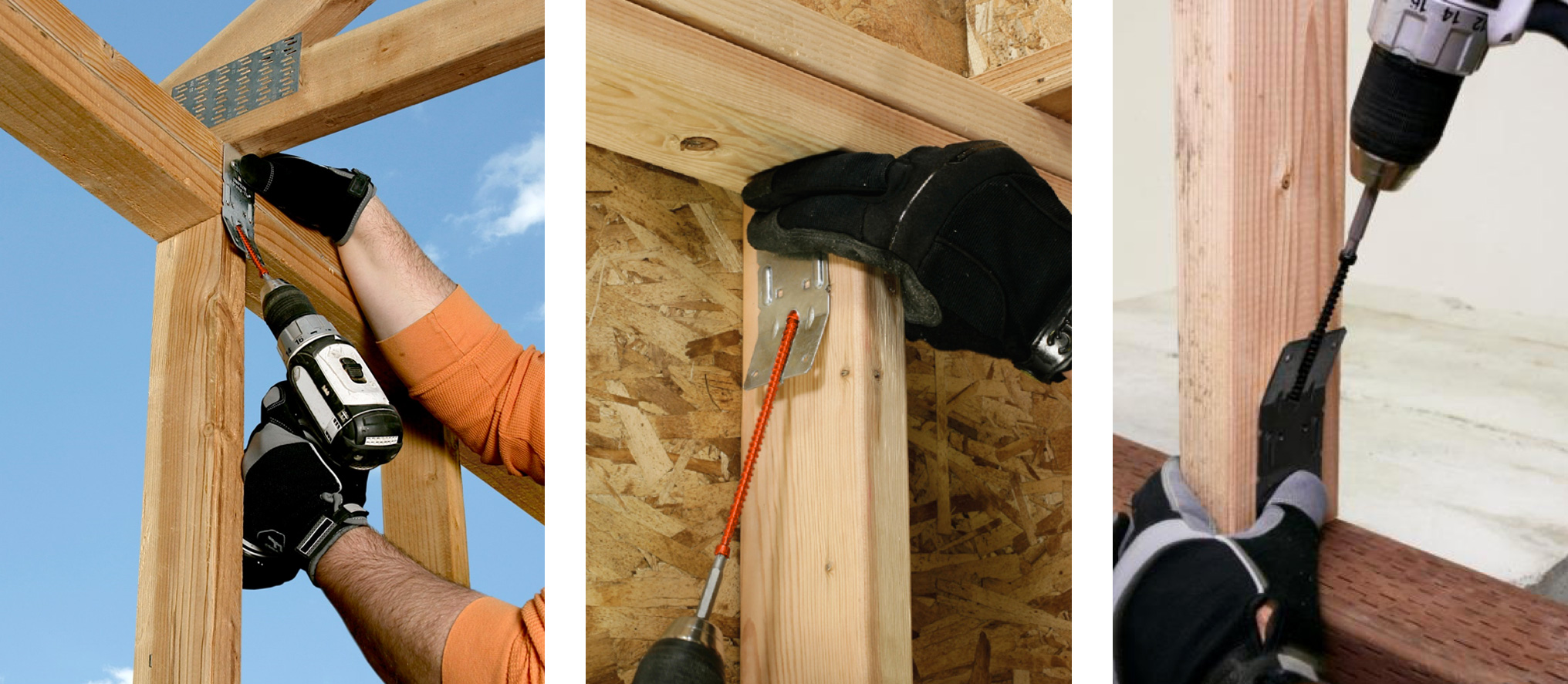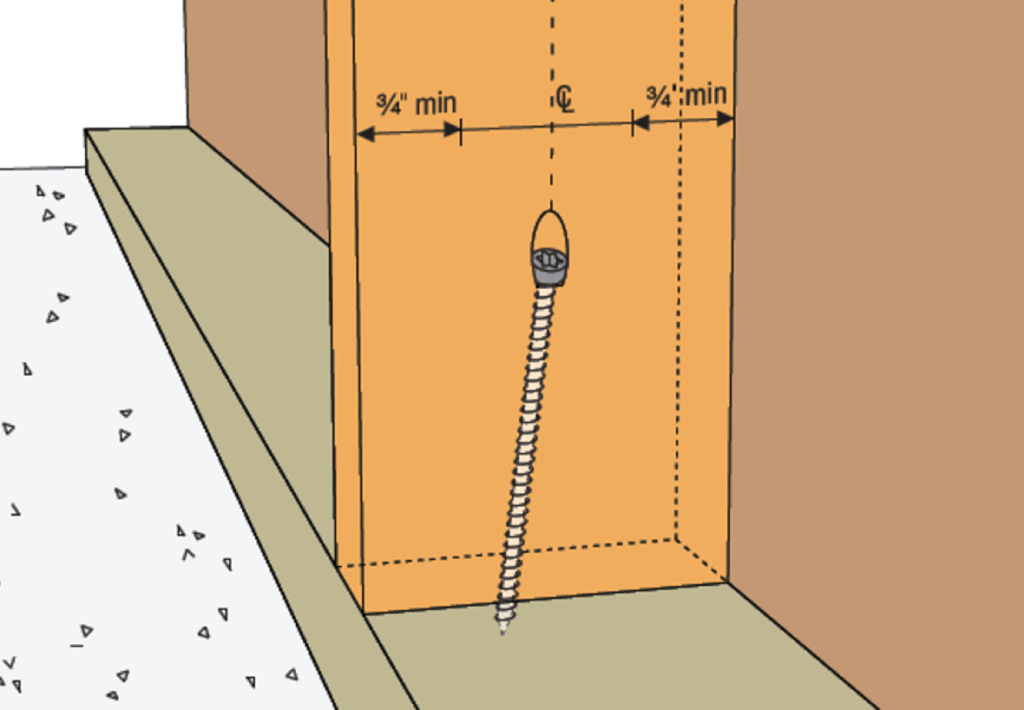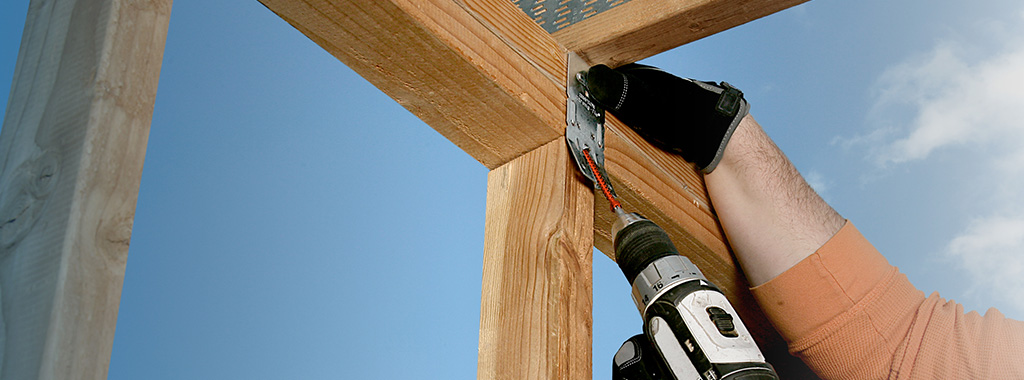Of course you know about creating a continuous load path with either connectors or rod tiedown systems, but have you considered using fasteners instead? In this post, Bryan Wert follows up on our May 2 webinar, Drive a New Path: Resisting Uplift with Structural Fasteners, by answering some of the interesting questions raised by the attendees.
On May 2, Simpson Strong-Tie hosted an interactive webinar where we discussed different methods of creating a continuous load path for wind uplift resistance. Most of the hour-long webinar was devoted to the innovative structural screw system comprising our Strong-Drive® SDWC Truss screw and the SDWF Floor-to-Floor screw with TUW take-up washer. In addition to sharing load capacities, installation details and various benefits of this system, we included a design example with illustrative specification options. In case you weren’t able to join our discussion, you can watch the on-demand webinar and earn PDH and CEU credits here.
As with our previous webinars, we ended with a Q&A session for the attendees. Billy Viars, our Training Manager in the Southeast United States, and Kent Phillips, our Multi-Family Manager, participated in the conversation as well — and since both of these guys love the sound of their own voices, we couldn’t answer every question in the time allotted. Following are a few of the questions and their answers, but if you’d like to see the full list of questions and answers, click here.
Screw Features/Installation/Applications
Does every SDWC screw require a guide?
The SDWC15600 and SDWC15450 both come with one guide in a box of 50 screws or two guides in a bucket of 500 screws. The guide helps ensure the correct angle of installation. Many times, however, the screw can be installed at no particular angle (e.g., roof member to top plate with no stud aligned below) — or, if an angled installation is required, our details allow for a range of acceptable angles for installation in case the guide is not used.

How much variation in screw placement and installation angle will inspectors accept?
The installation instructions show the acceptable angle range and important end- and edge-distance requirements. You can download them here.
Can you use impact drivers with these screws?
Yes, this one of advantages for using these fasteners.
Is it all right to use three fasteners per face in 2×4 and 2×6 studs?
We have installation instructions for SDWC screws through the wide face of a stud to plates using one, two or three screws per stud. These studs can be 2×4, 2×6 or 2×8. The maximum number of screws in the wide face of a stud that we’ve tested is two. For three screws, we require two in one face and one in the opposing wide face. The single screw should be between the two screws of the wide face.

What is the E-coat on the 4 ½ ” screws? Are these also zinc coated?
The E-coat® on the SDWC15450 is a proprietary coating that consists of a phosphate base and an organic top coating. The coating is recognized for use in some chemically treated woods. The SDWC15600 is zinc coated with an orange topcoat and is limited to dry-service conditions.
Is it ever advisable or necessary to have a second person to guide the screws through the top plate of the wall below?
It should never be necessary. One of the main advantages of the Truss screw is that installing it can be a one-person job. The only difficulty we’ve encountered is that, when installing the screw through a truss with a very steep angle, the installer needs to take some care to ensure that the tip of the screw gets started correctly and does not slide down the web.
Does this have any application in areas that are governed by seismic loads? And why not use a screw down from the bottom plate to a rim board and up from the top plates to a rim board?
The same capacities shown in the tables would apply to seismic loads, since the duration factor for seismic is the same as that for wind (1.60). As far as applications for seismic go, it may be applicable for lightly loaded shearwalls, and the concentrated load capacities of the SDWF-TUW from floor to floor in conjunction with SDWC screws from stud to plate may be useful. And if your second question is asking whether it’s permissible to use SDWC screws to connect either the bottom plate or the top plates (or both) to the rim board, that’s certainly possible if you have an EWP rim board. However, you would have to consider the effects of cross-grain tension if you use a solid sawn rim board; and there are floor systems that exist where you would not have a rim board at all.
Screw System Design / Testing / Load Tables
Are design loads for screws based on testing or just NDS screw withdrawal values?
The values in the load tables presented are based on testing in accordance with ICC-ES Acceptance Criteria 13.
Is Simpson Strong-Tie going to test the SDWC screws for shear connections?
Simpson Strong-Tie has already tested the SDWC for shear connections. The SDWC screw shear connection values are published generally in the evaluation report IAPMO-UES ER-262 (http://www.iapmoes.org/Documents/ER_0262.pdf). For specific shear connections like ledger-to-rim-board and sole-to-rim-board applications, see strongtie.com or our Fastening Systems catalog (C-F-2017).
The tables show F2. What are these values?
The F2 values are lateral shear capacities to transfer load perpendicular to the wall (typically inward or outward wall pressures that must transfer into the floor or roof diaphragms).
Do you have any videos of your testing of these connectors?
We do not have specific video of the SDWC and SDWF testing. However, we do have a good video that discusses and shows our overall testing program that you may find useful. Check it out on our YouTube channel:
Can we use this system for a shear wall instead of the hold down system or Strong-Rod™ system?
We’ve published the concentrated load capacities of the SDWF-TUW in single or double applications. These can be used in conjunction with SDWC screws for stud-to-plate connections for a lightly loaded shearwall holdown. The capacities of holdowns or rod systems are much higher.
Options for Continuous Load Path Uplift Restraint (Connectors, Rods, Fasteners)
Can you provide a cost comparison of the different systems?
There’s a great question that is difficult to give a short answer to. There are many variables that go into determining what the cost really is. The needs of the design and each particular project must be taken into account. Also, each system has its own set of pros and cons, and the value one assigns to each of those is subjective. In addition, there is the issue of cross-scope problems where one person’s scope savings may be another’s expense. Total installed cost regardless of scope should be considered. With all that said, the short answer when looking only at material (not including labor) is this, from lowest cost to highest: (1) connectors; (2) rods; (3) fasteners.
What is the cost advantage of SDWC versus framing angles?
It is literally almost a wash. If you use the street price of a H2.5A versus the SDWC, the screw system appears to be almost twice the price. However, when you include the cost of the 10 nails it takes to install a H2.5A, you almost get that back. Also, the time savings and ease of the screw installation help tilt the balance in favor of the SDWC.
Check out this video showing the time savings associated with installing SDWC screws:





